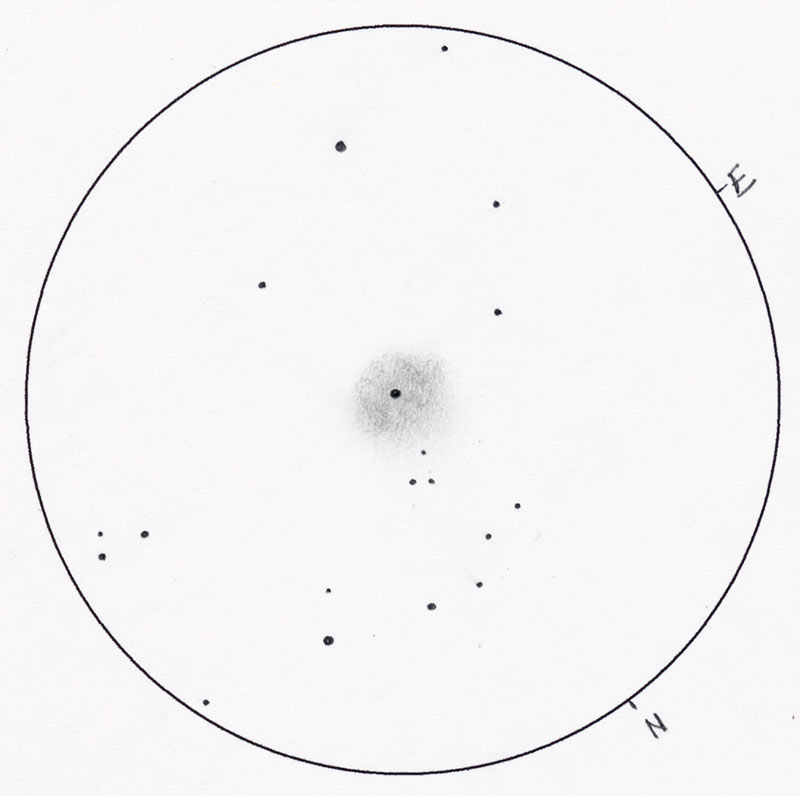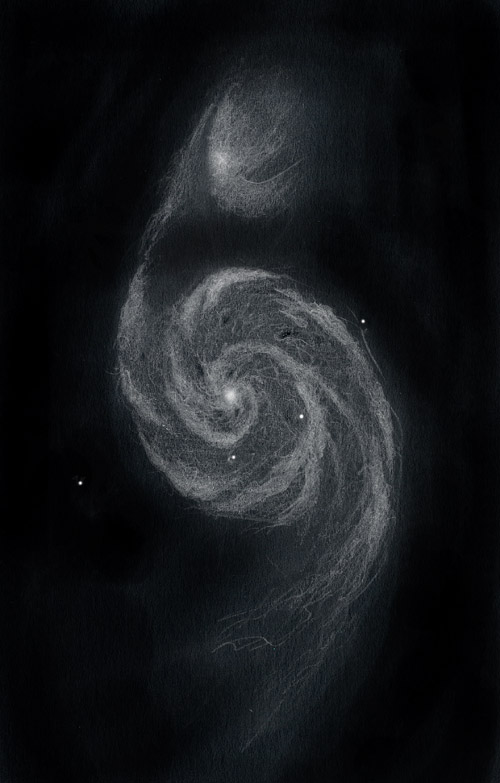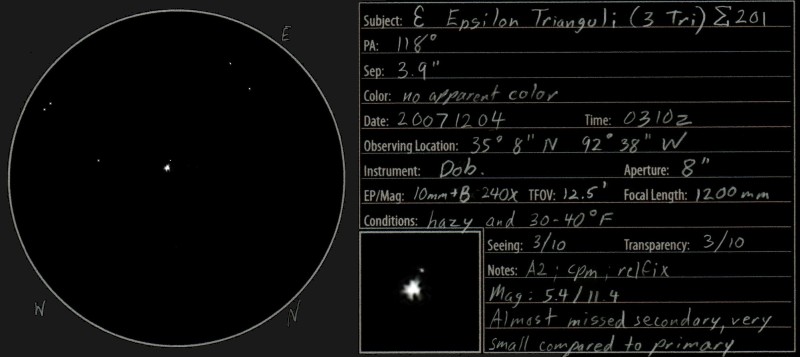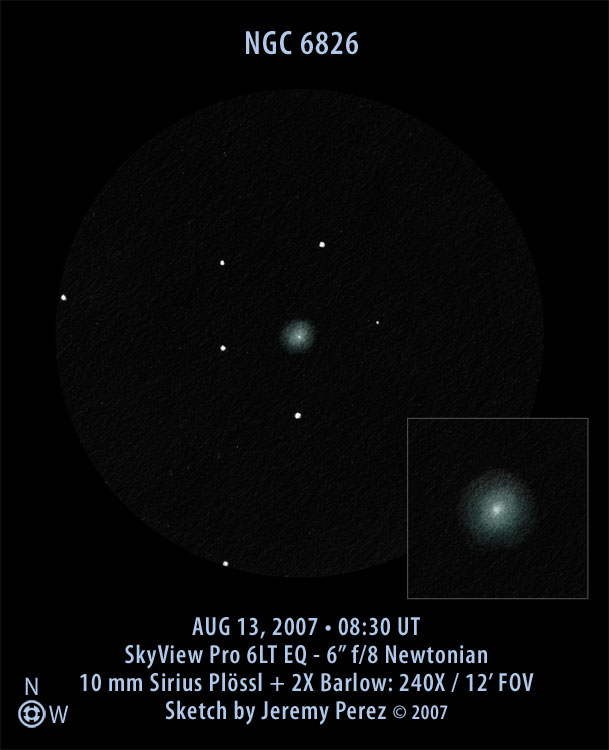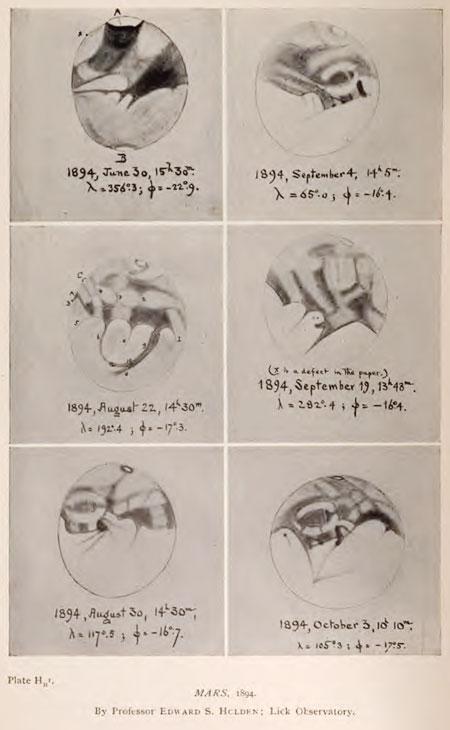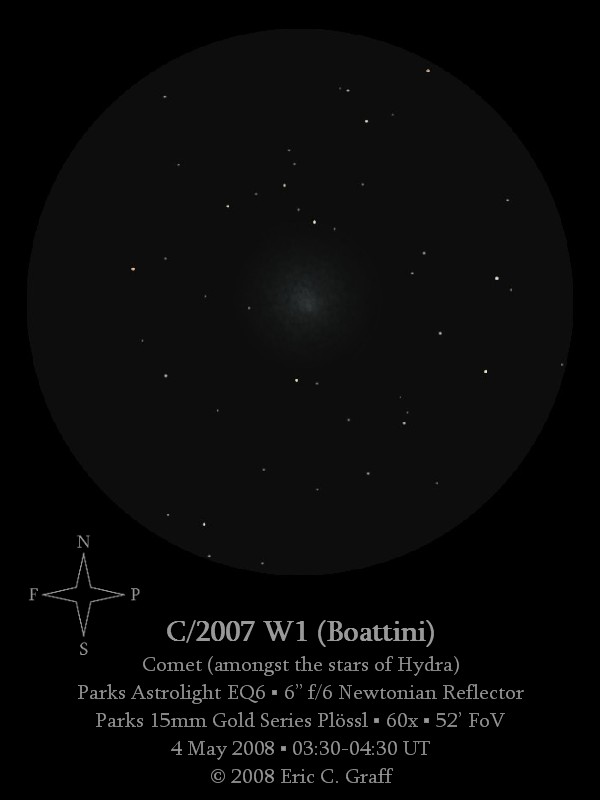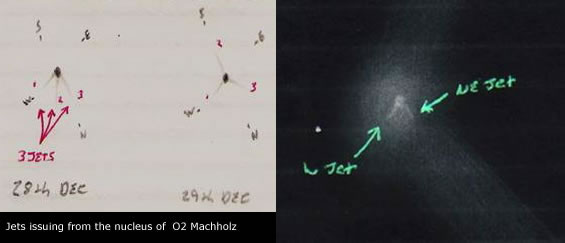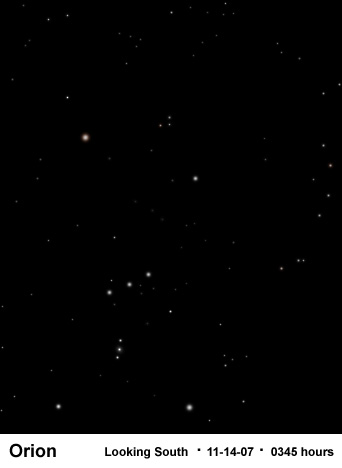NGC 1514
Sketch and Details by Bill Ferris
NGC 1514: Planetary Nebula (Taurus) RA: 04h 09.3m / DEC: +30º 46′.6
Instrument: 18-inch Obsession
NGC 1514 is pictured in the sketch [above]. Observing at 199X (12-mm Nagler Type 4) with the 18-inch Obsession, I initially mistook this large planetary as fog on the eyepiece producing a hazy glow around a bright star. But while sweeping the area, I realized that bright star was the only one encased in haze. I’d found the nebula. NGC 1514 covers a 3′ by 2′.5 area. At its heart is the blue tinged 9.4 magnitude central star. The nebulosity features a bright outer ring. After a few minutes observation, averted vision reveals striations within the nebula, and the east and west edges appear brighter than the surrounding ring. Slipping an OIII filter into position teases very faint outer lobes into view. These appeared along the east and west edges of the planetary nebula, and are confirmed by long exposure astrophotos and CCD images. Eighteen stars frame the view in the big Dob. You’ll find NGC 1514 in far northern Taurus about 3.5 degrees east-southeast of Zeta (44) Persei.

